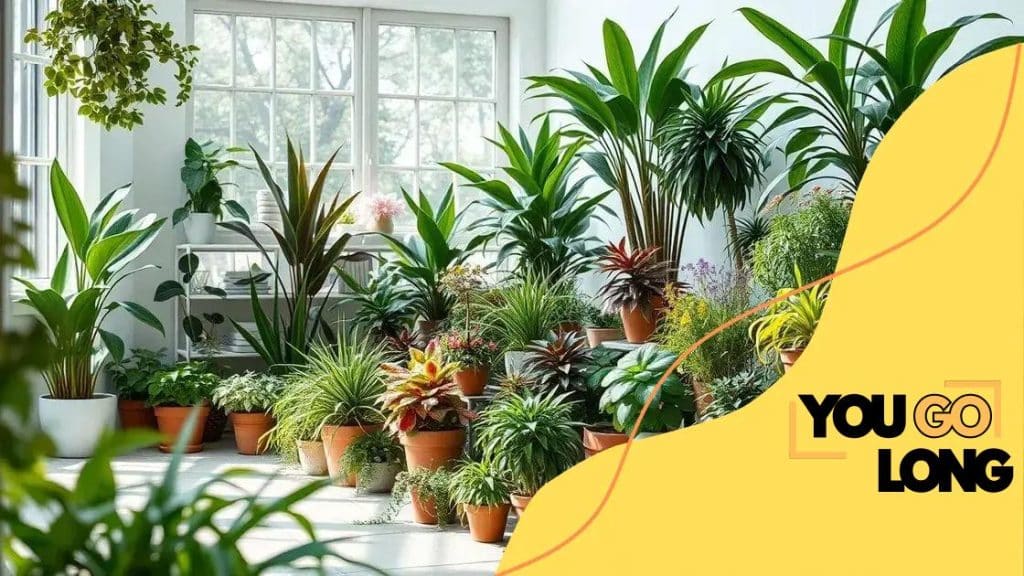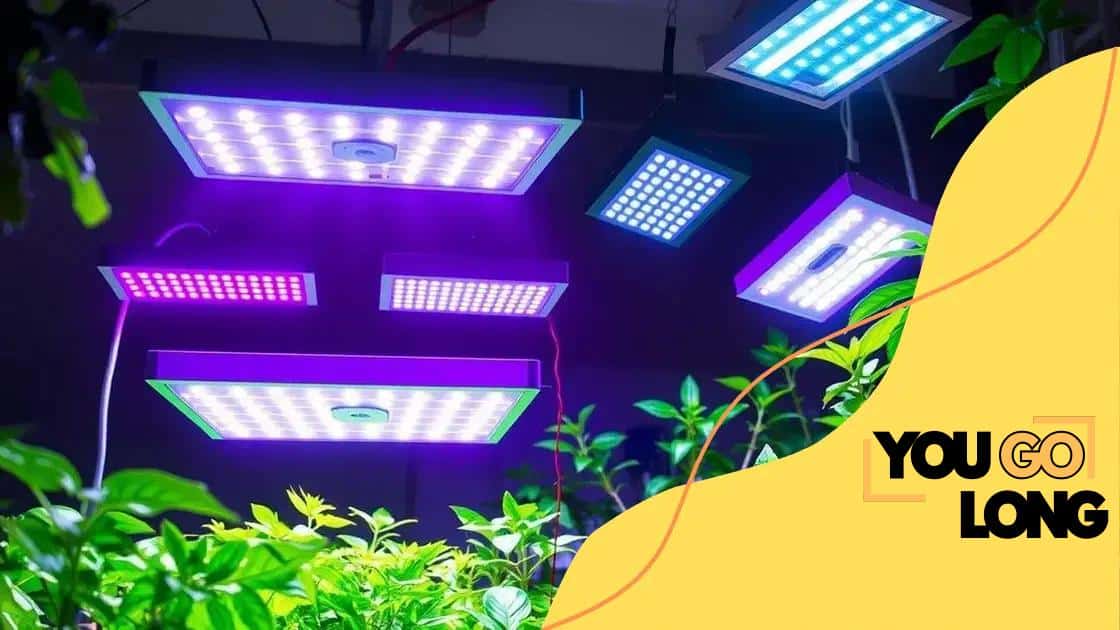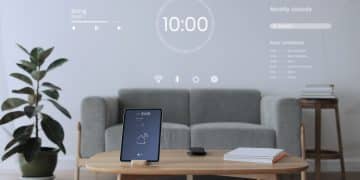Indoor garden ideas for year-round greenery

Advertisement
Indoor garden ideas for year-round greenery involve selecting the right plants, maintaining proper lighting and watering techniques, and managing pests effectively to ensure a thriving indoor environment.
Are you looking for ways to bring nature indoors? Indoor garden ideas for year-round greenery can help you create a vibrant space in your home. Let’s dive into practical tips and inspiration that will motivate you to start your own indoor garden.
Choosing the right plants for your indoor garden
Choosing the right plants for your indoor garden is essential for success. Not only do they bring beauty to your space, but they also improve air quality. With the right selection, you can enjoy greenery all year round.
Factors to Consider
When deciding on plants, think about the conditions in your home. Different plants have different needs. Consider things like light, humidity, and temperature. It’s also important to find a plant that fits your lifestyle.
Advertisement
- Light: How much natural light do you have? Some plants need bright light, while others thrive in low light.
- Space: Make sure to choose plants that will fit in your available space without overcrowding.
- Care level: Select plants that match your gardening skills. Some are easy, while others require more attention.
- Humidity: Consider how humid your indoor environment is. Some plants prefer a high humidity level.
Another great choice is to mix various types of plants. You could combine leafy greens, colorful flowers, and even herbs. This variety not only adds aesthetic appeal but can also serve practical purposes. For instance, herbs can be used in your cooking.
Best Indoor Plants for Beginners
If you’re new to indoor gardening, start with plants that are known to be easy to grow. Some popular and hardy options include:
- Spider Plant: Thrives in most conditions and is very forgiving.
- Pothos: Grows well in low light and requires minimal watering.
- Snake Plant: Tolerates neglect and low light.
- ZZ Plant: Known for its resilience and drought tolerance.
As you grow more comfortable, feel free to explore more exotic plants. Learning what works best for you will lead to greater satisfaction in your gardening journey.
Advertisement
Essential tools for successful indoor gardening
Essential tools for successful indoor gardening can make a big difference in how your plants thrive. Having the right supplies helps you care for your greenery easily and effectively. Let’s explore what tools you really need.
Basic Tools
Start with the basics that every indoor gardener should have. These tools are helpful for planting, watering, and maintaining your indoor garden.
- Watering can: Choose one with a long spout for easy watering.
- Pruning shears: Ideal for trimming leaves and stems to keep plants healthy.
- Plant pots: Ensure they have drainage holes to prevent overwatering.
- Soil scoop: A small scoop makes it easier to fill pots with soil.
In addition to these basics, consider how to monitor your plants’ health. Having the right tools will help you become a better gardener. For example, a moisture meter can tell when it’s time to water. It’s a simple way to avoid over-watering.
Growth Aids
To help your plants grow strong, certain aids can be beneficial. Fertilizers, for instance, give plants the nutrients they need. You can find organic fertilizers that are friendly to the environment.
- Plant food: A balanced fertilizer can boost growth.
- Grow lights: If natural light is limited, these lights mimic sunlight for optimal growth.
- Humidity trays: Placing plants on trays filled with water can increase humidity levels.
- Support stakes: Use them to help taller plants stand up straight.
Keep in mind the importance of organization. Having a gardening journal can help you track what you plant, how often you water, and any issues you notice. This way, you can learn and improve your gardening skills over time.
Creating the perfect lighting for year-round growth

Creating the perfect lighting for year-round growth in your indoor garden is vital for keeping your plants healthy. Proper lighting helps plants photosynthesize, which is essential for their growth and vitality.
Understanding Light Needs
Different plants have varying requirements for light. Some thrive in bright, direct sunlight, while others do well in low-light conditions. Understanding these needs is the first step towards ensuring they get the right amount of light.
- Bright light: Plants like succulents and flowering varieties prefer lots of direct sunlight.
- Indirect light: Many foliage plants, such as pothos or snake plants, do well with filtered light.
- Low light: Some plants, like the ZZ plant, adapt well to shady corners.
Once you know what your plants need, you can choose the right lighting options. Natural sunlight is always excellent, but sometimes it’s not enough, especially in winter.
Types of Artificial Lighting
For indoor gardening, various types of artificial lights can replicate sun exposure. Understanding these types can help you make better choices for your indoor garden.
- LED grow lights: These are energy-efficient and can be tailored to emit specific light wavelengths that plants need.
- Fluorescent lights: A good option for starting seeds and growing herbs indoors.
- Incandescent bulbs: Generally not recommended since they produce more heat than light and can harm plants.
Positioning your lights correctly is crucial. Place them at the right distance from your plants to ensure they receive adequate light without getting burned. A good rule of thumb is to keep LED lights about 12 to 24 inches away and fluorescent lights around 6 to 12 inches from the plants.
Additionally, it’s important to consider the duration of light exposure. Most plants benefit from about 12 to 16 hours of light daily. Using a timer can help maintain a consistent schedule, promoting optimal growth throughout the year.
Watering techniques for indoor plants
Watering techniques for indoor plants play a crucial role in their overall health. The right amount of water helps plants thrive, while overwatering or underwatering can lead to problems. Understanding how to properly water your plants is essential.
Watering Basics
To start, it’s important to know how often you should water. This can vary based on the type of plant, the size of the pot, and the environment. Most indoor plants prefer to dry out slightly between waterings.
- Check the soil: Stick your finger about an inch into the soil. If it feels dry, it’s time to water.
- Use room temperature water: Cold water can shock the roots and damage the plant.
- Water thoroughly: Ensure water reaches the roots, allowing it to drain from the bottom of the pot.
Many indoor gardeners also benefit from using the right tools for watering. A watering can with a long spout is ideal, as it allows for more precise watering, especially in hard-to-reach places.
Techniques to Consider
Different techniques can help make watering more effective. For instance, bottom watering is where you soak the pot in a shallow dish of water, allowing plants to absorb moisture from the bottom.
- Top watering: Pour water directly onto the soil, making sure to reach the edges of the pot.
- Self-watering pots: These pots have a reservoir that allows plants to draw up water as needed.
- Rainwater collection: Using rainwater can be beneficial, as it is free of chemicals found in tap water.
Remember that the plant’s needs may change with the seasons. During the growing season, plants usually need more water. In contrast, in winter, they may require less. Adjusting your watering schedule accordingly will ensure your indoor garden flourishes.
Common challenges and how to overcome them
Common challenges in indoor gardening can often frustrate even the most dedicated plant lovers. However, understanding these challenges allows you to find effective solutions and enjoy a thriving indoor garden.
Overwatering and Underwatering
One of the most frequent issues indoor gardeners face is getting the watering right. Overwatering can lead to root rot, while underwatering causes your plants to dry out and wilt. Knowing how to assess your plant’s needs is essential. You can avoid these problems by checking the soil moisture with your finger and adjusting your watering schedule accordingly.
- Signs of overwatering: Yellowing leaves, moldy soil, and root rot.
- Signs of underwatering: Wilting leaves, dry soil, and leaf drop.
Using pots with drainage holes can also help manage water levels effectively, allowing excess water to escape.
Pest Management
Indoor plants are susceptible to pests like aphids, spider mites, and mealybugs. Keeping an eye on your plants for any signs of infestation is crucial. Regularly inspecting the leaves and stems can help you catch pest problems early.
- Natural remedies: Neem oil and insecticidal soap can be effective against many common pests.
- Isolation: If you identify an infested plant, isolate it to prevent pests from spreading to healthy plants.
Creating a healthy environment is key, as healthy plants are less likely to attract pests. Ensure good air circulation and avoid overcrowding plants.
Lighting Issues
Lack of proper lighting is another challenge many indoor gardeners encounter. Plants may not grow well if they do not receive the right amount of light. Each plant has its specific light requirements.
- Adjust positioning: Move your plants closer to windows or consider using grow lights.
- Monitor light exposure: Rotate your plants to ensure even growth on all sides.
Understanding these challenges and implementing effective strategies to overcome them will lead to a more successful indoor gardening experience.
FAQ – Common Challenges in Indoor Gardening
What should I do if my plant leaves are yellowing?
Yellowing leaves can indicate overwatering or poor lighting. Check the soil moisture and ensure the plant is receiving adequate light.
How can I prevent pests in my indoor garden?
Regularly inspect your plants for signs of pests and use natural remedies like neem oil to control infestations.
What type of light do indoor plants need?
Different plants have different light requirements. Most indoor plants thrive in bright, indirect light, while some can tolerate low light.
How often should I water my indoor plants?
The frequency of watering depends on the plant type, pot size, and environment. Generally, it’s best to check the soil moisture before watering.





